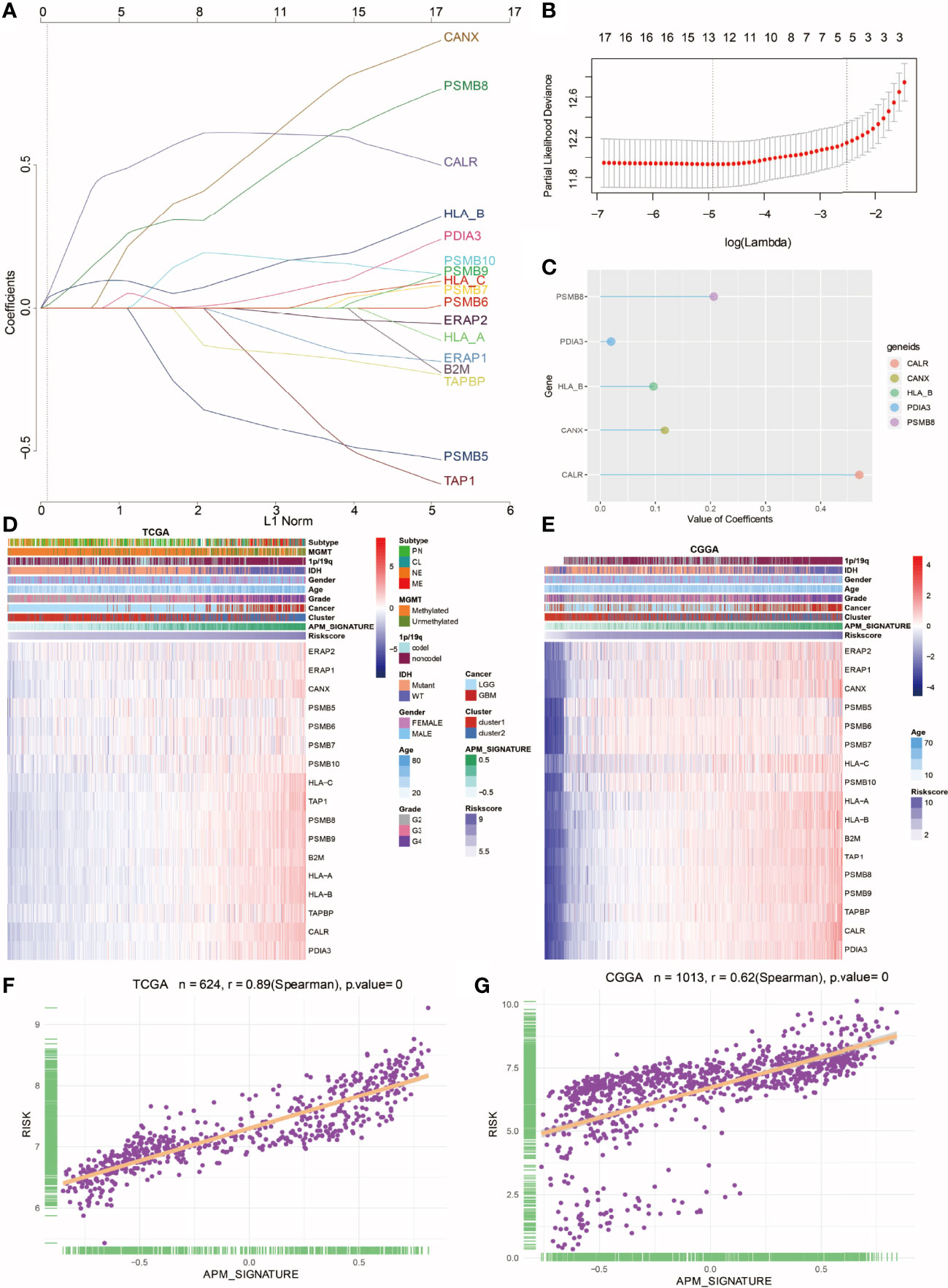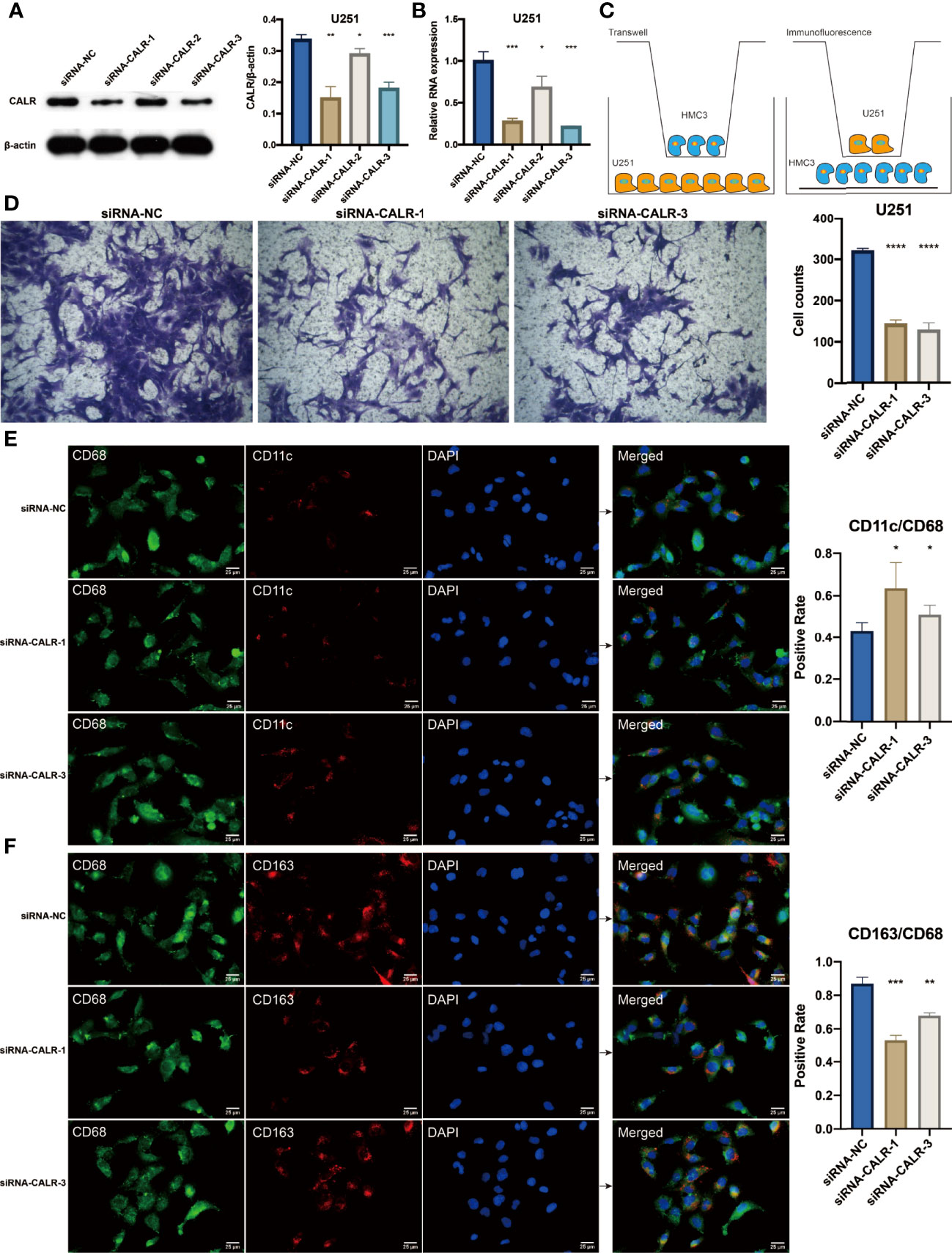
95% of researchers rate our articles as excellent or good
Learn more about the work of our research integrity team to safeguard the quality of each article we publish.
Find out more
CORRECTION article
Front. Immunol. , 02 June 2022
Sec. Cancer Immunity and Immunotherapy
Volume 13 - 2022 | https://doi.org/10.3389/fimmu.2022.931433
This article is part of the Research Topic Plasticity of Immune Cells in Tumor Microenvironment View all 7 articles
This article is a correction to:
Antigen Presentation Machinery Signature-Derived CALR Mediates Migration, Polarization of Macrophages in Glioma and Predicts Immunotherapy Response
 Rui Chen1†
Rui Chen1† Hao Zhang2,3†
Hao Zhang2,3† Wantao Wu3,4†
Wantao Wu3,4† Shuyu Li5†
Shuyu Li5† Zeyu Wang2,3
Zeyu Wang2,3 Ziyu Dai2,3
Ziyu Dai2,3 Zaoqu Liu6
Zaoqu Liu6 Jian Zhang7
Jian Zhang7 Peng Luo7
Peng Luo7 Zhiwei Xia8*
Zhiwei Xia8* Quan Cheng2,3*
Quan Cheng2,3*In the original article, there was a mistake in Figure 4G as published. The title of Figure 4G was mistakenly copyedited from the title of Figure 4F during the figure preparation. The corrected Figure 4 appears below.

Figure 4 Construction of APM signature gene-based risk score. (A) LASSO regression analysis showing the coefficients of APM signature genes. (B) Partial likelihood deviance of APM signature genes. (C) Bubble plot depicting the APM-derived risk signature genes. (D) Heatmap depicting the association between APM signature genes and risk score in the TCGA. (E) Heatmap depicting the association between APM signature genes and risk score in the CGGA. (F) The correlation between APM signature and risk score in TCGA. (G) The correlation between APM signature and risk score in the CGGA.
The authors apologize for this error and state that this does not change the scientific conclusions of the article in any way. The original article has been updated.
In the original article, there was a mistake in Figure 9E as published. Images (siRNA-CALR-1 group) were mistakenly chosen from the group named siRNA-NC during the figure preparation. The corrected Figure 9 appears below.

Figure 9 (A) Western blotting results for U251 cells treated with siRNAs. Statistical analysis of the western blotting results in different siRNA groups. (B) Statistical analysis of the qPCR results in different siRNA groups. (C) Diagram for the coculture between HMC3 and U251 cells. (D) Transwell assay for the cocultured HMC3 cells. Statistical analysis of the migrated HMC3 cells in different siRNA groups. (E) Immunofluorescence staining of CD68 and CD11c in HMC3 cells. (F) Immunofluorescence staining of CD68 and CD163 in HMC3 cells. *P < 0.05; **P < 0.01; ***P < 0.001; ****P < 0.0001.
The authors apologize for this error and state that this does not change the scientific conclusions of the article in any way. The original article has been updated.
All claims expressed in this article are solely those of the authors and do not necessarily represent those of their affiliated organizations, or those of the publisher, the editors and the reviewers. Any product that may be evaluated in this article, or claim that may be made by its manufacturer, is not guaranteed or endorsed by the publisher.
Keywords: antigen presentation machinery, glioma, microenvironment, prognosis, genomic alteration, immunotherapy
Citation: Chen R, Zhang H, Wu W, Li S, Wang Z, Dai Z, Liu Z, Zhang J, Luo P, Xia Z and Cheng Q (2022) Corrigendum: Antigen Presentation Machinery Signature-Derived CALR Mediates Migration, Polarization of Macrophages in Glioma and Predicts Immunotherapy Response. Front. Immunol. 13:931433. doi: 10.3389/fimmu.2022.931433
Received: 29 April 2022; Accepted: 13 May 2022;
Published: 02 June 2022.
Edited and reviewed by:
Fuming Qiu, Zhejiang University, ChinaCopyright © 2022 Chen, Zhang, Wu, Li, Wang, Dai, Liu, Zhang, Luo, Xia and Cheng. This is an open-access article distributed under the terms of the Creative Commons Attribution License (CC BY). The use, distribution or reproduction in other forums is permitted, provided the original author(s) and the copyright owner(s) are credited and that the original publication in this journal is cited, in accordance with accepted academic practice. No use, distribution or reproduction is permitted which does not comply with these terms.
*Correspondence: Zhiwei Xia, eGlhemhpd2VpMjAxMUBnbWFpbC5jb20=; Quan Cheng, Y2hlbmdxdWFuQGNzdS5lZHUuY24=
†These authors have contributed equally to this work and share first authorship
Disclaimer: All claims expressed in this article are solely those of the authors and do not necessarily represent those of their affiliated organizations, or those of the publisher, the editors and the reviewers. Any product that may be evaluated in this article or claim that may be made by its manufacturer is not guaranteed or endorsed by the publisher.
Research integrity at Frontiers

Learn more about the work of our research integrity team to safeguard the quality of each article we publish.